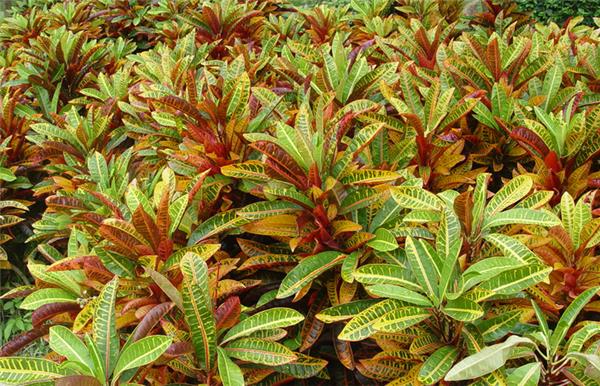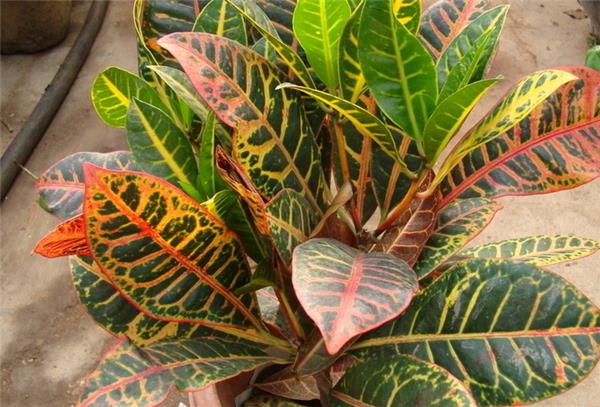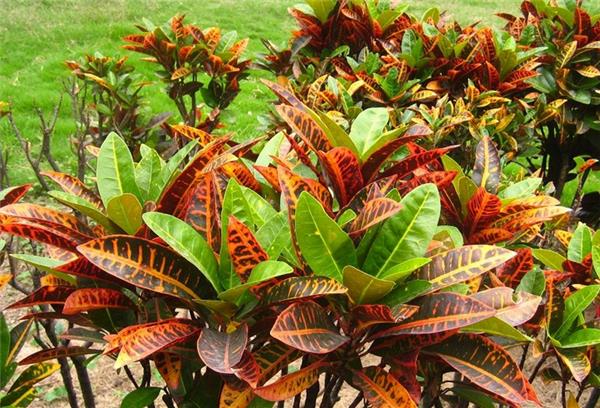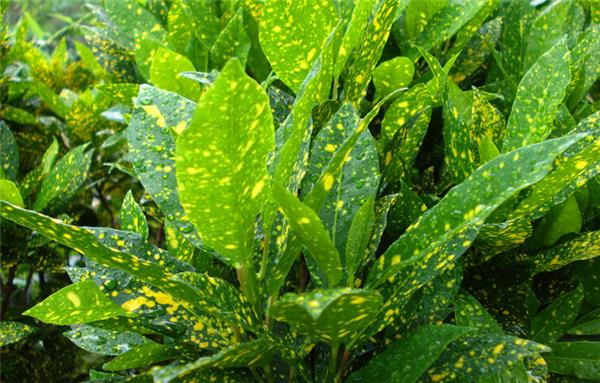[culture methods and matters needing attention of variable-leaf trees] how to raise variable-leaf trees
Variable-leaf wood, also known as Sajin banyan, is a common decorative plant in the south, named because of the variety of leaf colors, and can often be seen in home layout. Then how to raise the variable leaf wood, and what is the breeding method of the variable leaf wood? The following is to introduce how to raise the variable-leaf wood and the breeding method of the variable-leaf wood.

I. Culture methods of variable-leaf wood
Variable leaf wood likes warm and humid climate, likes sunshine, and is not resistant to cold. Winter room temperature can not be lower than 15 degrees. The rotten leaf soil which requires good drainage and water retention is not strict to the acidity and basicity of the soil.
The leaf-changing wood was put on the basin with rotten leaf soil and 1 peat soil, and the basin was turned over and changed soil once in 2 years. It is important to spend the winter indoors in October. I'll be out late in spring. After getting out of the room, spraying water every day increases the air humidity, and the rainy season should be moved to a place with strong light. During the growth period, it is necessary to apply rotten liquid fertilizer 3 to 4 times, and pay attention to foliar spray, often maintain air humidity. Proper ventilation should be maintained to prevent the occurrence of beetles. The lower leaves of the variable-leaf wood are often easy to fall off, if they can be watered in time. Proper pruning can prevent falling leaves.

II. Matters needing attention in the culture of variable-leaf wood
The main results are as follows: 1. The light-loving plants of the genus Chlorophyllum need plenty of sunlight during the whole growing period. If the cultivation of variable-leaf wood time is not enough for a long time, it will have leaf markings, spots are not obvious, lack of luster, branches are soft, and even produce deciduous leaves.
2. The variable leaf wood likes the humid climate environment, and the relative air temperature of the growing environment is required to be 70% to 80%. The air relative humidity is too low, which will lead to the yellowing and shedding of the lower leaves and the lack of luster of the upper leaves.
3. The basin soil should be kept a little dry at low temperature in winter, such as half of it is dormant in winter, and too much water will cause defoliation, which must be strictly controlled.

3. Cultivation techniques of variable-leaf wood.
Leafy trees are sensitive to low temperature and frost, and the branches and leaves on the ground can die when the low temperature lasts about 6 ℃ for several days or frost overnight. Therefore, Frosts Descent should be moved to the greenhouse for cultivation in time before the advent, and the lowest temperature in the greenhouse should be well ventilated in the summer of 15-20eCe and keep the temperature constant. It is beneficial to its growth. Should not be put into indoor cultivation for a long time, because long-term lack of light will make color markings or spots fade and lose luster. In the midsummer of high temperature and strong light, proper shading should be taken to avoid direct light to burn the leaves. Pots or pots need to be made from a mixture of dead soil, rotten leaf soil and coarse sand, plus about 5% cake fertilizer, irrigation fertilizer or superphosphate. In the peak growing season from May to August, liquid fertilizer was applied every 15 days, phosphorus and potassium fertilizer was applied twice after autumn to enhance resistance, and fertilizer was stopped after winter. Keep the potted soil moist. Foliar sprinkling can be carried out when the air is dry. It is appropriate to use the same water as room temperature. When the main stem of the young plant grows a little thicker, it can be cut off on the flat ground, germinate into clusters, and the potted plant is more beautiful. Trim the dense, diseased and withered branches every spring.

The above is about how to raise the variable-leaf wood, the relevant introduction of the breeding method of the variable-leaf wood, hope to be helpful to everyone. It is not difficult to cultivate variable-leaf wood, as long as you master the breeding method of variable-leaf wood, coupled with careful maintenance, you will certainly be able to breed variable-leaf wood with beautiful shape and color.
- Prev

[fragrant snowball] fragrant snowball picture, fragrant snowball planting method
[fragrant snowball] fragrant snowball picture, fragrant snowball planting method
- Next

[how to raise fire crane flowers in water] how to raise flaming crane flowers
[how to raise fire crane flowers in water] how to raise flaming crane flowers
Related
- Wuhan Hospital Iron Tree Blooming Result Was Instantly Frightened by the Gardener Master
- Which variety of camellia is the most fragrant and best? Which one do you like best?
- What is the small blue coat, the breeding methods and matters needing attention of the succulent plant
- Dormancy time and maintenance management of succulent plants during dormancy
- Minas succulent how to raise, Minas succulent plant pictures
- What are the varieties of winter succulent plants
- How to raise succulent plants in twelve rolls? let's take a look at some experience of breeding twelve rolls.
- Attention should be paid to water control for succulent plants during dormant period (winter and summer)
- Watering experience of twelve rolls of succulent plants
- Techniques for fertilizing succulent plants. An article will let you know how to fertilize succulent plants.

